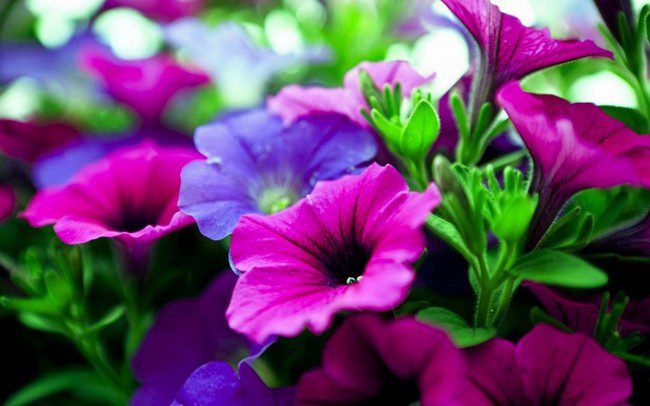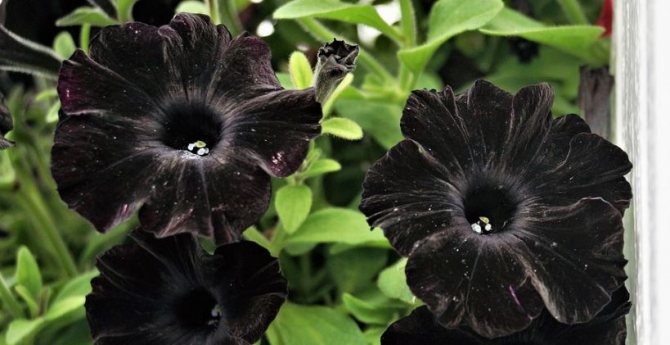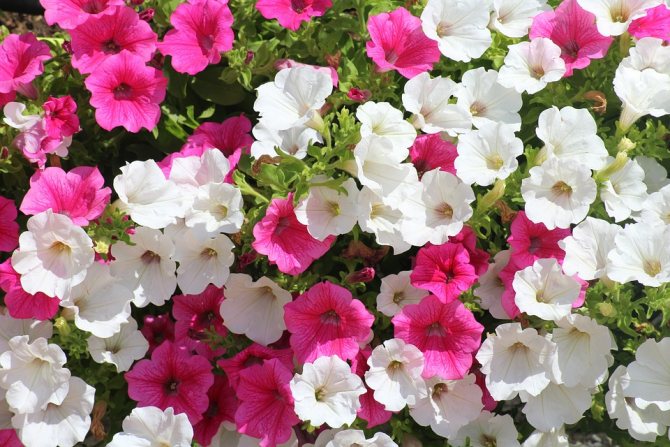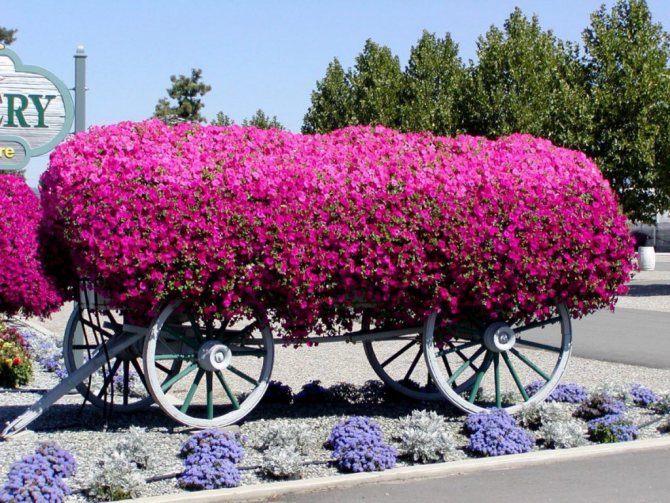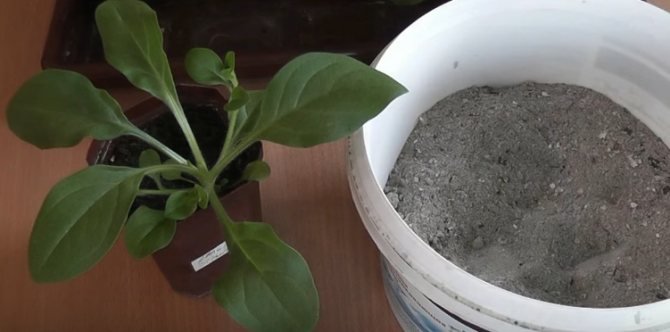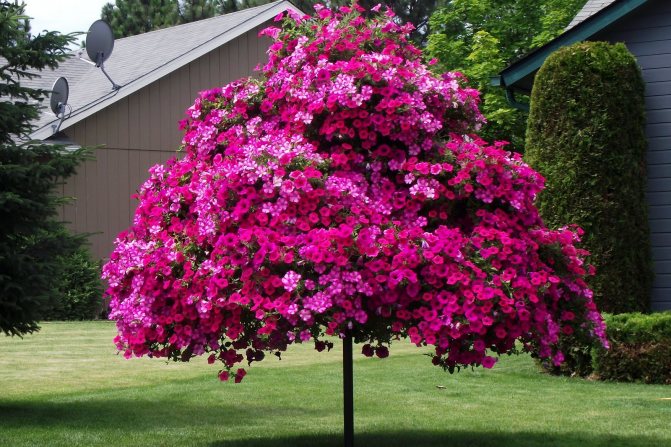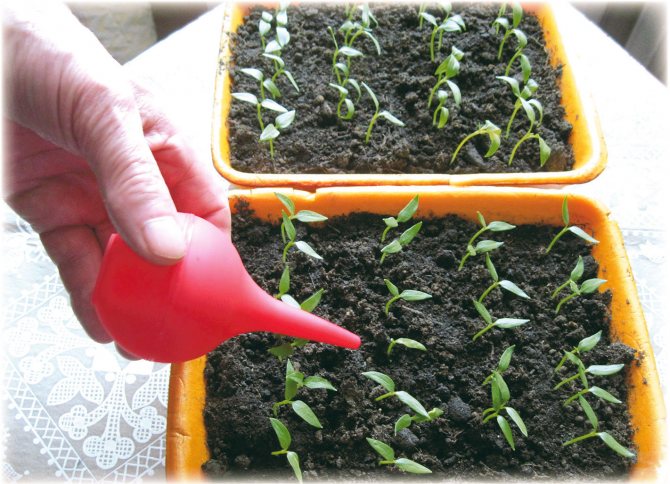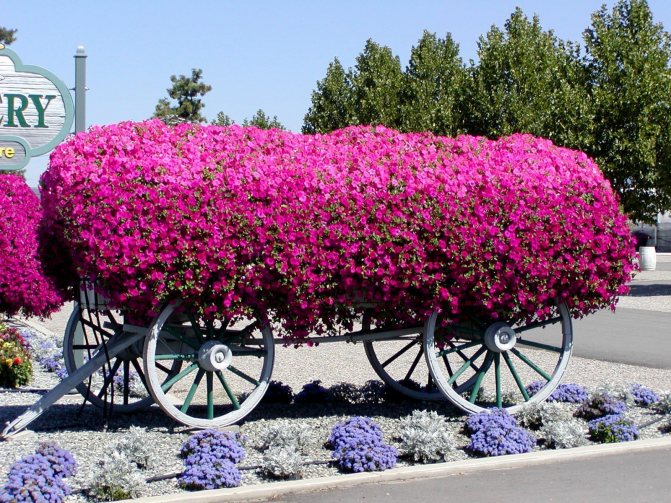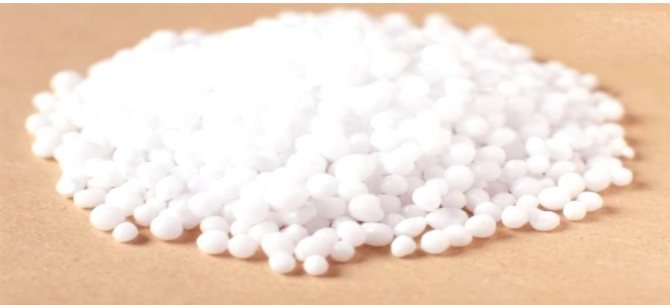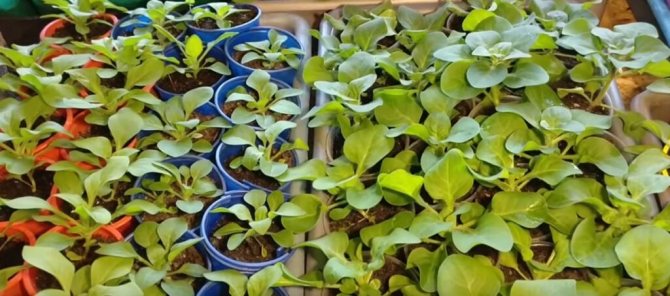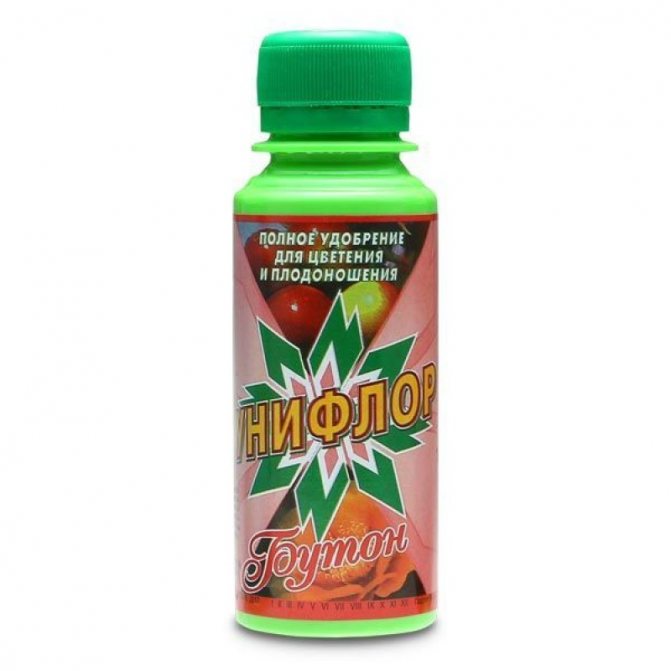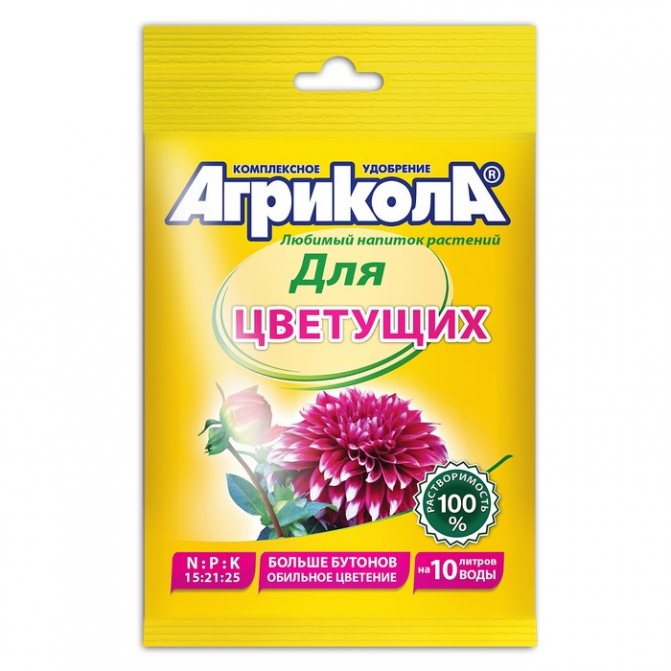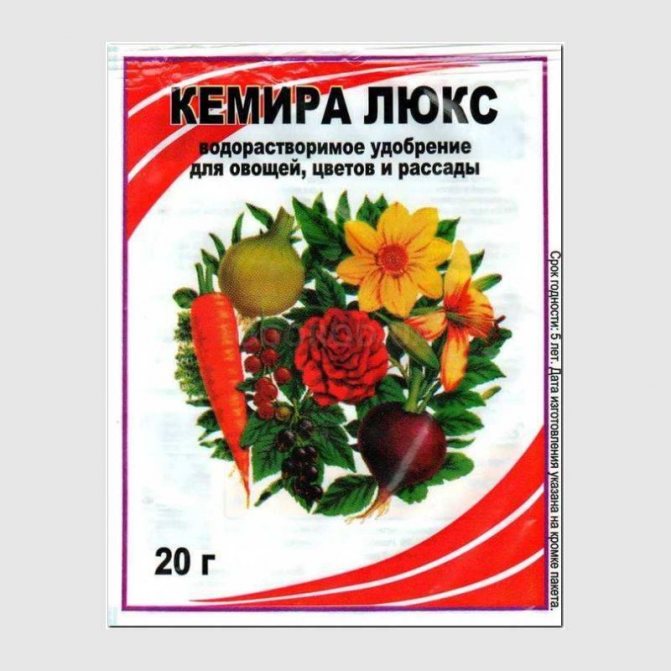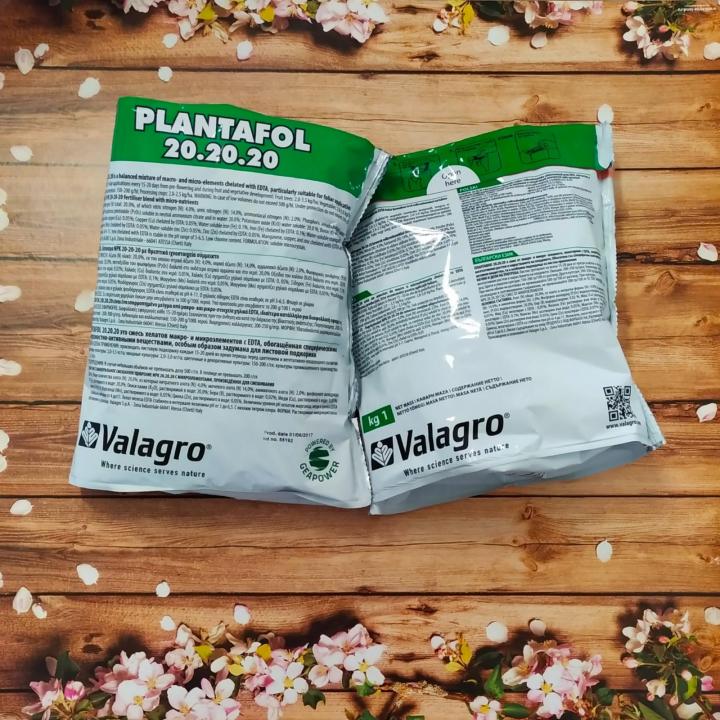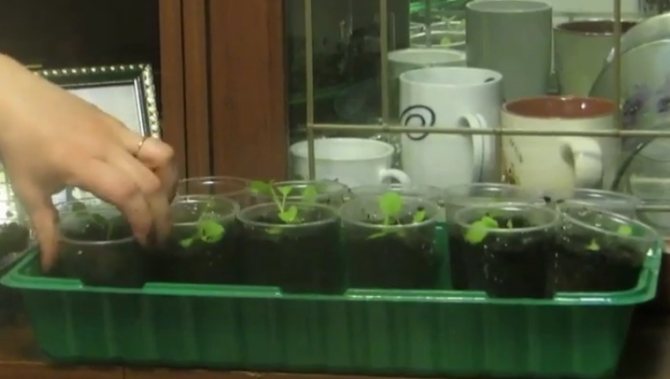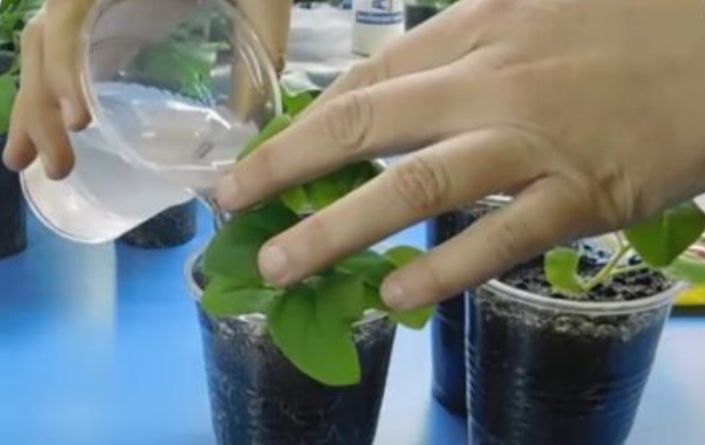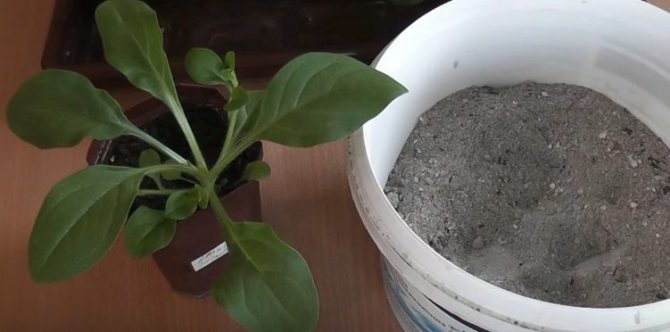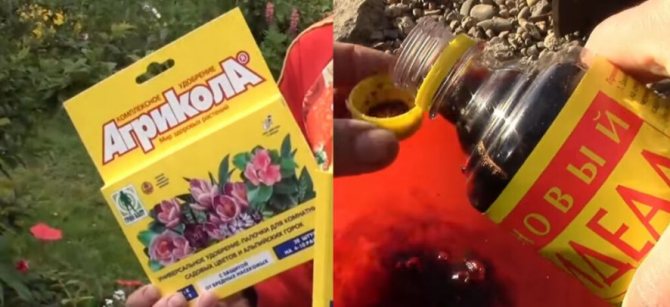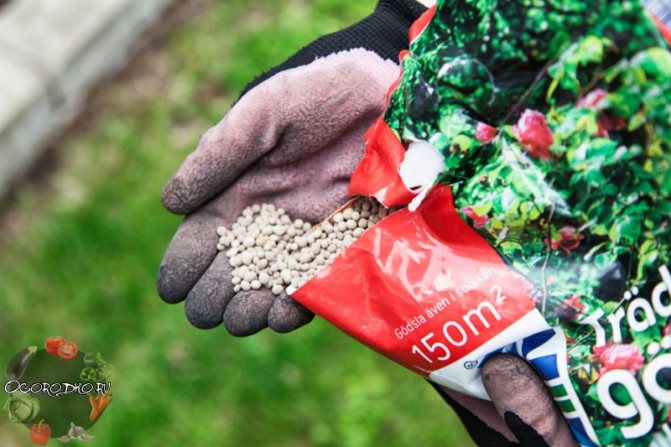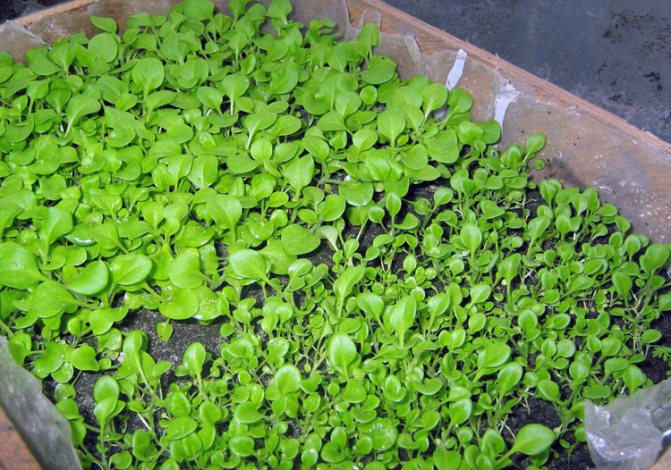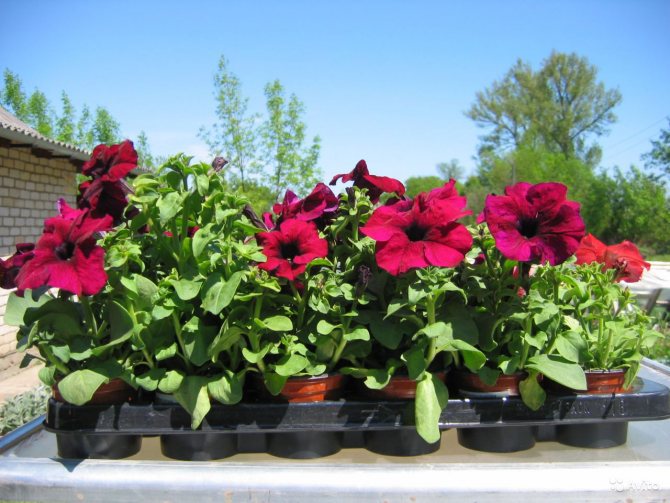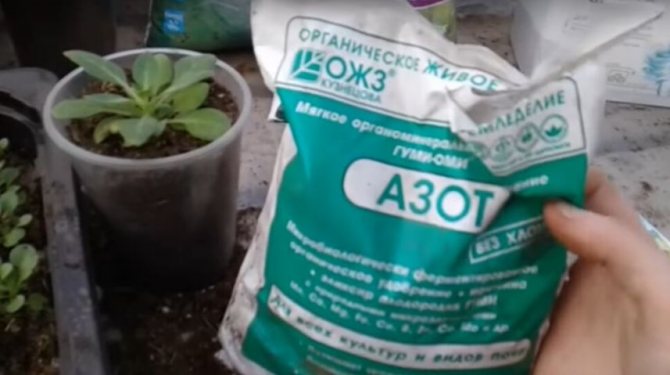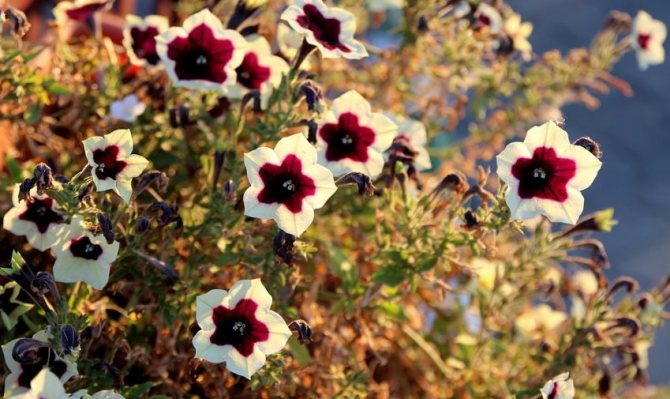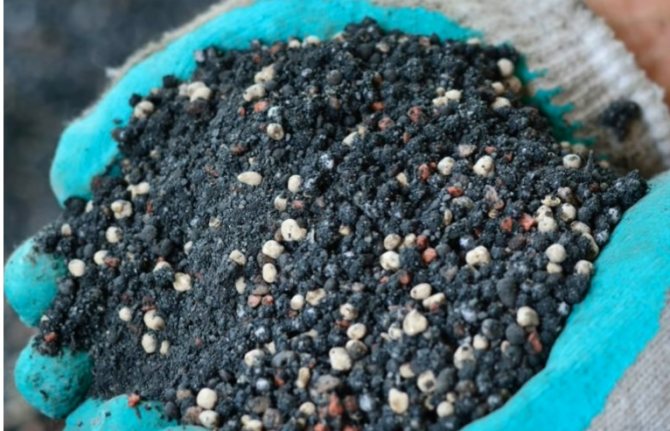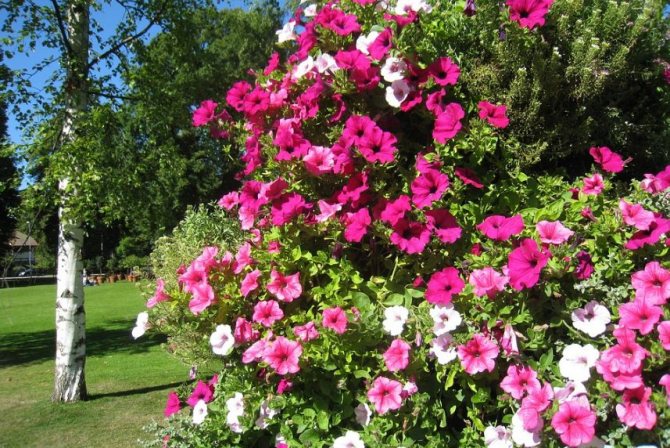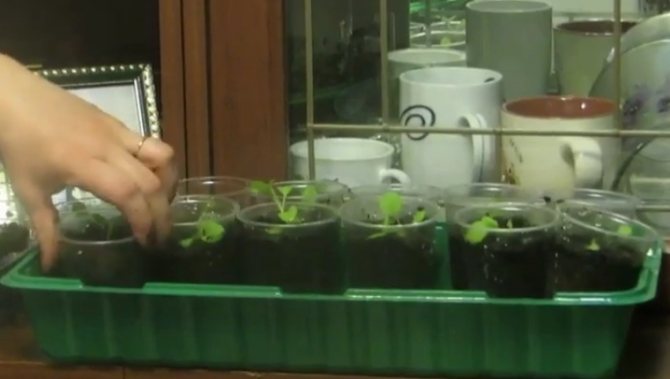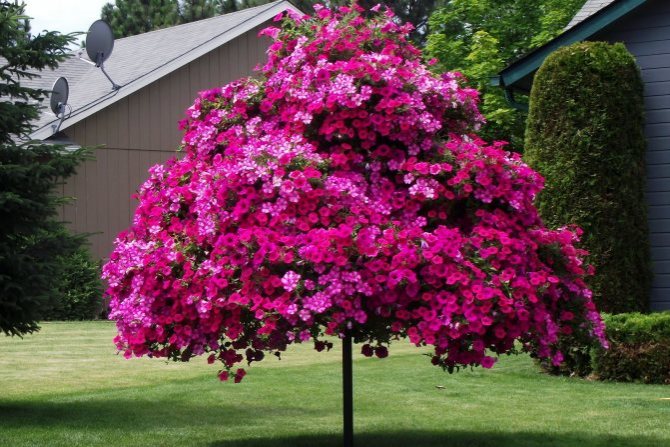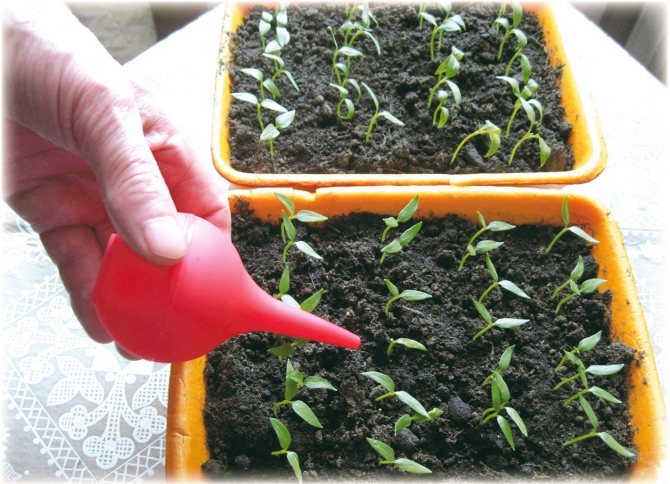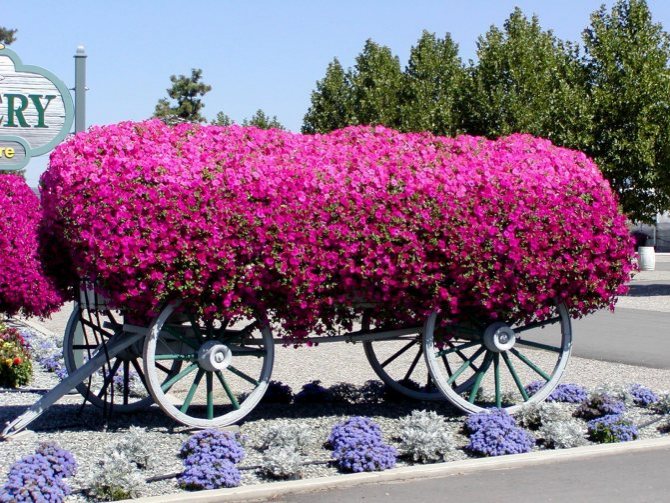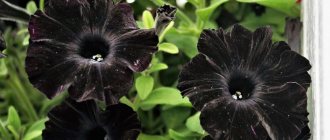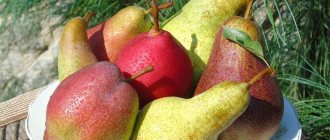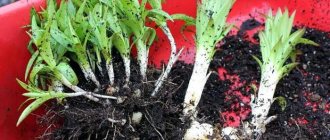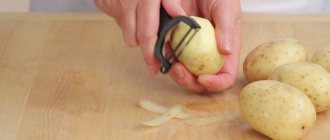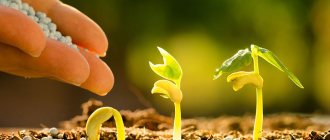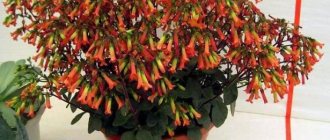- Video
The question of how to feed petunia for abundant flowering naturally sounds from domestic amateur flower growers. In the climatic conditions of many regions of Russia, this thermophilic perennial plant is grown in an annual culture. For intensively and long-lasting flowering annuals, feeding is vital because it helps to ensure maximum results in one season.
Petunias (pictured) are luxurious ornamental plants that bloom throughout the warm season in open flower beds, verandas and balconies
The guarantee of lush and long-lasting flowering is not only knowledge of the characteristics of these plants, their species and varieties, but also compliance with the rules of growing and care at home or on a personal plot. To grow a beautiful fragrant flower garden, one should not neglect simple and understandable truths: petunias require sufficient watering, periodic removal of dead flowers and regular feeding.
Today we will tell you in detail what top dressing should consist of, what they are and what is the meaning of their use at all stages of the plant's life cycle.
Features of growing petunias
To determine the timing of sowing petunia seeds for seedlings, you need to know to which group of plants the seeds you have prepared belong.
- The seeds of ampelous plants are sown in January.
- Dwarf petunia is sown in February-March.
- Small-flowered varieties are sown last, as they bloom very quickly.
The main types of petunias are sown in March.
It is most convenient to grow petunia seedlings in plastic cups. The soil needs to be prepared in the fall. Mix equal proportions of garden soil, sand, peat and humus. Distribute the resulting mixture in containers for seedlings, having previously covered the bottom with shallow drainage.
You can buy ready-made soil mixture in the store, but it will need to be enriched with ash - 0.5 liters of infusion per 5 kg of soil mixture. To prepare an infusion of ash, take 100-200 g of ash in a bucket of cold water and leave for a week.
Moisten the soil in containers with a weak solution of potassium permanganate. Mix the seeds with the soil and pour on top of the container. There is no need to bury the seeds or additionally sprinkle it with earth. Cover the cups with plastic wrap to create a suitable microclimate for seed germination.
Ventilate containers daily and spray soil with water from a spray bottle. When the seeds germinate, thin out the seedlings, leaving the strongest ones.
When the first leaves appear on the plants, remove the film and place the containers with seedlings in a well-lit place with an air temperature of about 15 degrees. Water the plants gently every day. Pour water under the root so that drops do not fall on the leaves. Make sure that no crust forms on the soil - the soil must be loosened. Plants can be pinched to form lush shrubs.
In open ground, seedlings of petunias are planted in May. Two weeks before planting, the seedlings begin to harden. Take plants outside for a few hours every day, choosing a sunny, windless place. Watering petunia planted in open ground is necessary in such a way as to prevent the soil from drying out, but also to avoid stagnant water.
Petunia: a brief description of the flower
Petunia, oddly enough, is a distant relative of tomatoes, as it comes from the nightshade family. Her historical homeland is South America. In the tropical forests of wildlife, the length of this plant reaches 1.2 m, but our short and far from tropical summer does not give it such an opportunity.
Petunia belongs to the class of perennials, but domestic gardeners consider it an annual plant and plant a new one every spring. The plant tolerates adverse weather conditions well. Florists love it not only for its picturesqueness, but also for its long flowering period, which lasts from early summer to almost October.
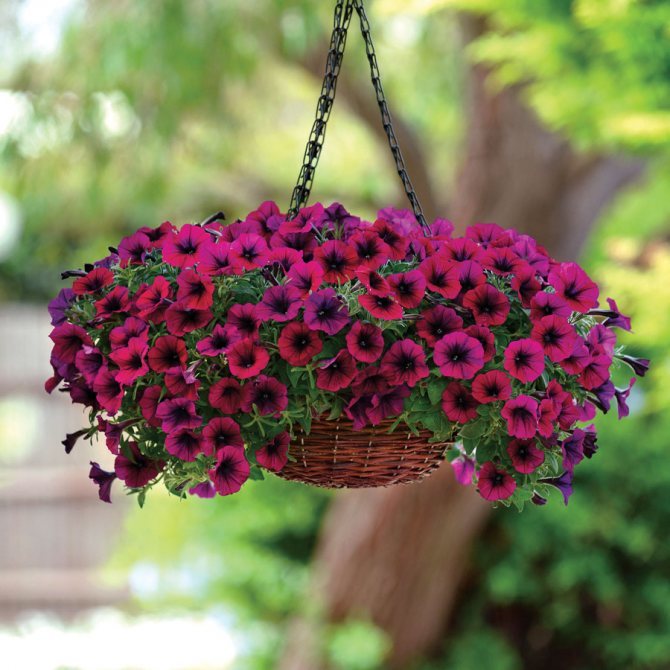
The bush grows strongly, it becomes like an elongated drop or a dense ball, completely covered with funnel-shaped flowers. The plant is very decorative; it is used to decorate terraces, balconies, flower beds in city parks, etc.
Fertilizing petunias
Plant feeding is carried out in different ways. The choice of fertilization method depends on the goals of the event and on the stage of flower growth.
- Top dressing of seeds before transplanting. Usually the seeds are fed with succinic acid. After such a procedure, petunia grows faster, tolerates drought more easily and actively fights various diseases.
- Top dressing of the soil before planting seedlings. The purpose of the event is to provide the necessary nutrient medium for plants. Before planting seeds in it, the soil is also fertilized - with a weak solution of potassium permanganate or fungicide.
- Fertilization of seedlings and adult plants. Two weeks after the first leaves have appeared, you can start feeding. Apply fertilizer every other day, alternating with watering the plants. For the first feeding, nitrogen and phosphate fertilizers are suitable.
- Foliar fertilization of petunia. Foliar dressings are sold as a spray liquid. Such dressings are most effective in combination with the traditional root method of fertilization.
Regardless of where the petunia grows - in a pot or in a spacious flower bed, the plants need to be fed regularly.
What is the best use for a given culture?
The flowering of the petunia is abundant and lush, but this does not mean that at this time it does not need to be fed. By the middle of the growing season, the soil under the plant is severely depleted. And if the petunia is in a pot, then the process of exhaustion began much earlier.
It is during the flowering period that top dressing should not be reduced, but, on the contrary, increased.... In addition, the growth of the petunia continues, it throws out new buds. It is competent nutrition that is vital to her.
TIP: Ideal to add complex mineral preparations with equal concentration of potassium, nitrogen and phosphorus. You can buy ready-made compounds in the store, the packaging of which says "For flowering indoor plants." These preparations are designed for feeding petunias in a small volume of soil.
Together with mineral compositions, humic dressings can be used... During flowering, liquid green fertilizer or any class of humates will do. Just do not use it in combination with trace elements. It is better to alternate feeding every other time. It is also necessary to reduce the dosage by 2 times so as not to harm the petunia.
What are the types of petunia feeding
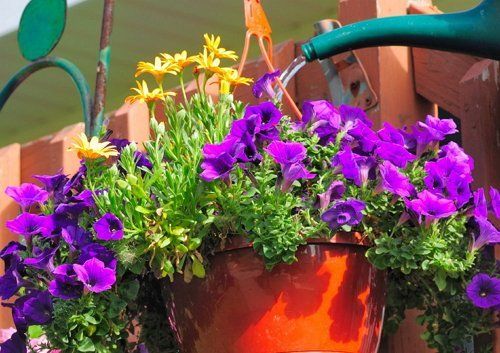

There are three main types of dressings, depending on their principle of influence on the plant.
- Liquid fertilizers. Such dressings are sold in the form of concentrated liquids, which are diluted with water according to the instructions. The resulting solution is watered or sprayed on the plants.
- Dry fertilizers. These feeds are sold in the form of granules or powder, which dissolve in water according to the instructions. Such dressings are used at least once a week. You can fertilize plants even every other day, but in this case, the concentration of the solution should be 5 times less.
- Long-lasting fertilizers.These are special granules that are introduced into the soil before planting plants and dissolve over time. Top dressing occurs regularly without constant fertilization procedures.
The latter type of fertilizer is suitable for experienced gardeners, because with it there is no way to regulate the degree of plant nutrition. Use liquid and dry fertilizers to grow petunias at home.
How to fertilize a flowering plant
The care of an adult flower will depend on where it grows. If you plant it in open ground, the care will be minimal. The petunia flower is able to take care of essential nutrients on its own.
Important! The soil in this place should be fertile.
Mineral fertilizers for abundant flowering of petunias
A flower that is planted in hanging pots, pots, flowerpots or baskets does not have the above benefits, so it should be fertilized regularly. As it grows, petunia can deplete even the most nutritious soil. Beneficial trace elements can also be washed out by rain if it grows on open terraces or balconies. Thus, fertilization should be applied throughout the summer season.
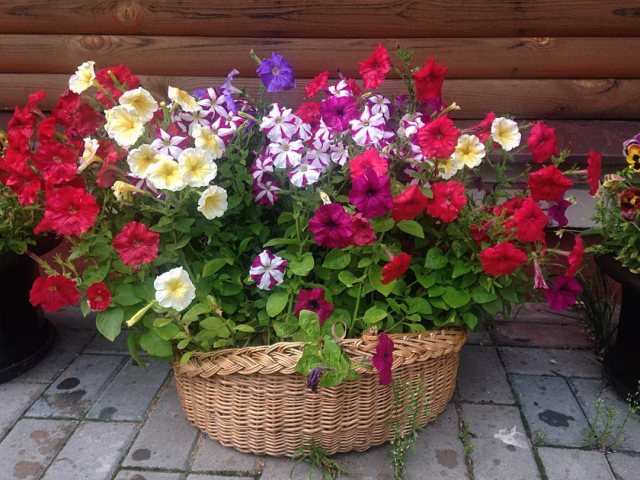

But how to feed petunia for abundant flowering? You can use both liquid and dry products.
Attention! You need to make top dressing at least once a week, and in the doses recommended by the manufacturer.
It is also important to consider the time it takes for the flower to absorb the fertilizer. For example, petunia can be fed just once a week or once every one or two days. But the more often fertilizer is applied, the lower its concentration should be.
Long-acting granular products should be used to ensure that nutrients are delivered evenly. For abundant flowering of petunias, you should choose phosphorus-potassium fertilizers. Florists recommend green "Kristalon", which solution is used to treat the root part of the plant.
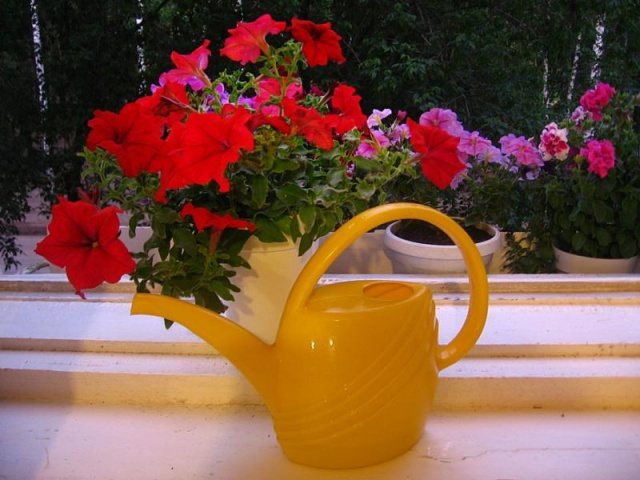

The flower should be fed with complex means, paying attention to their composition. They should have an increased content of phosphorus (P) and potassium (K): the first element is responsible for the growth of roots and flowering of the plant, the second for its flowering and fruiting. If you use feed with the same nitrogen (N), phosphorus and potassium content, petunia will grow tops, but its flowers will remain small.
In the summer, you can use two types of mineral fertilizers:
- Liquid. They are sold as concentrated solutions. If the goal is the abundant flowering of petunia, then preparations with a high content of phosphorus and potassium should be chosen. The most popular liquid make-ups for petunias are Bona Forte, Garden of Miracles, Uniflor and Ideal.
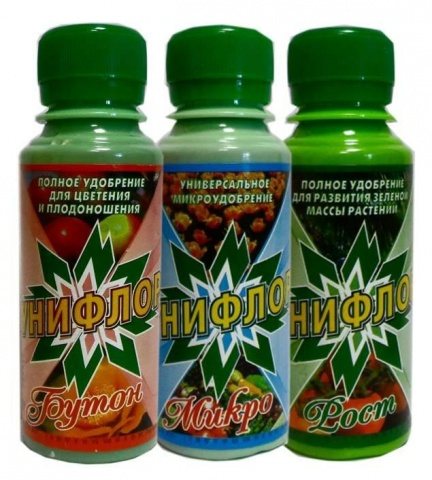

- Dry. These are powders and granules that are dissolved in water. Attention! It is possible to fertilize the plant with these preparations only after they completely dissolve in water. Otherwise, they can damage the roots. Florists recommend using Plantofol, Master and Kemira Lux (NPK ratio - 16-20.6-27.1), Agricola (with a composition of 15-21-25).
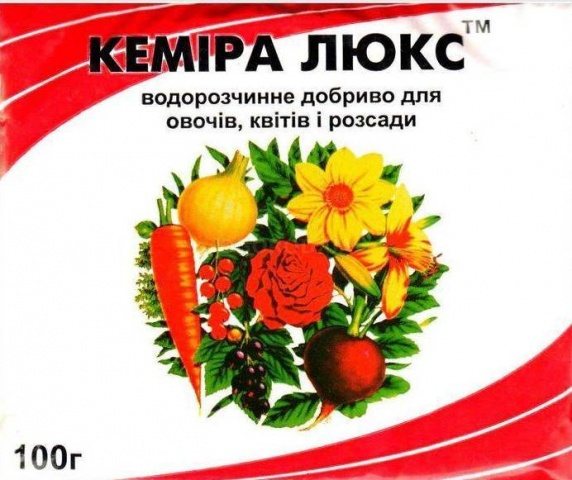

Yeast feed for petunia (for flowering)
Yeast is one of the most effective and affordable fertilizers, and also the least expensive. The yeast-based solution can be applied both during the development of seedlings and in the summer, when the petunia begins to bloom. Yeast fertilizer can be poured under the root, or sprayed with flower leaves (while the concentration of the solution should be reduced). Top dressing can be done with both dry and live yeast.
Raw yeast. The first step is to prepare the correct solution. Live yeast must be diluted in warm water (in a ratio of 1: 5), and left for several hours to ferment. It is best to do this at night, then in the morning the concentrated composition can be diluted with water (1:10). In the evening it will be possible to bring in (at the root).
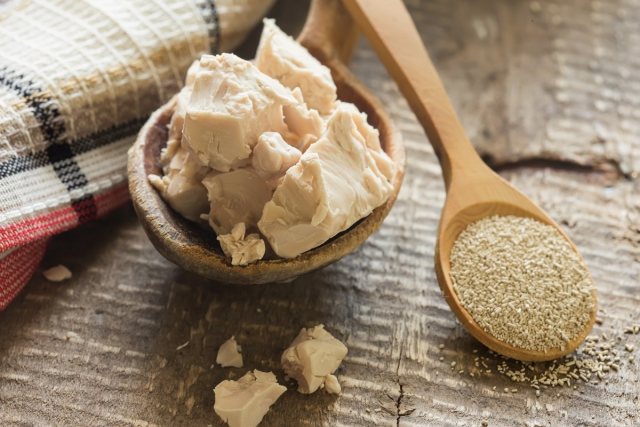

Dry yeast.This is an even more budget-friendly fertilizer option. For 10 g of dry yeast, you will need 60 g of sugar and 10 liters of water. Dissolve dry ingredients in warm water and leave at room temperature for 2 hours. The finished solution should be diluted again with water (50 liters). This recipe allows you to get a large amount of stimulating fertilizer for petunias flowering, while the cost of it will be minimal.
Attention! It is not necessary to add any organic agents (manure, bird droppings, urea, grass) to the yeast solutions, since they nullify the effect of feeding.
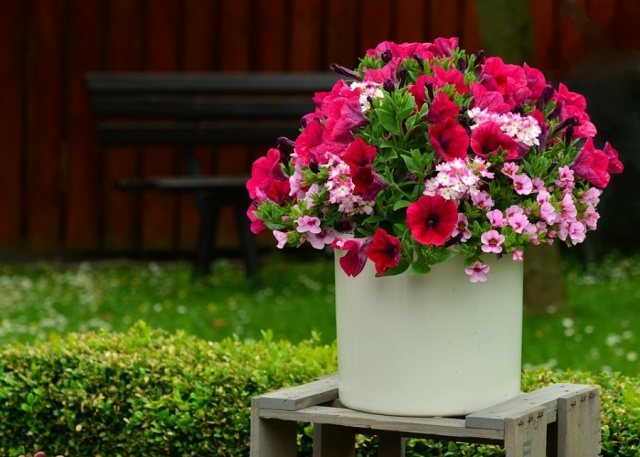

Chicken droppings
You can feed petunia with chicken droppings when growing seedlings, but in order to achieve abundant flowering, this should be done when planting petunias in the soil. To reduce the concentration of substances potentially harmful to petunias contained in this organic fertilizer, it should be diluted with water first. Chicken droppings should be applied in small quantities so as not to damage the roots of the plant.
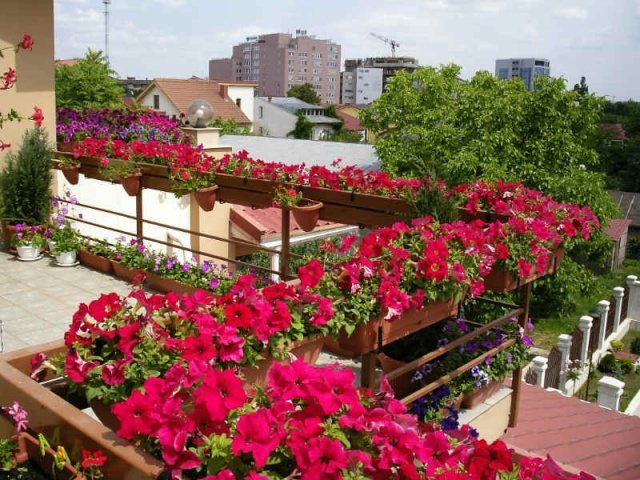

Urea
Urea should be used in combination with mineral fertilizers, for example, magnesium or potassium humate, which is traditionally used to feed petunias. As with chicken droppings, urea should also be diluted with water. This organic solution must be sprayed on the leaves and stem.
Fertilizers for the rapid growth of petunias
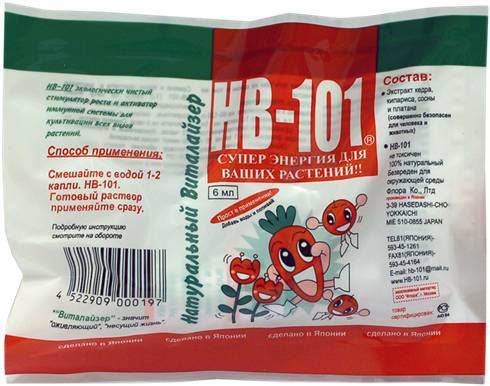

It happens that petunia grows poorly even at the stage of leaf formation. The reason may be incorrect climatic conditions or lack of fertilizers in the soil. You will need the following medications:
- Fitosporin-M (it is better to take it with the mark “fortified with the elixir of fertility Gumi”);
- HB-101;
- Energen (based on potassium salts of humic acids).
Dilute each drug according to the instructions and mix in equal parts. Water the soil with the resulting cocktail before sowing seeds. After sowing, fertilize the plants with the same cocktail once a week - 1 tablespoon per plant, replacing watering with this procedure.
If you notice that a crust forms on the soil due to lack of moisture, spill the soil with a dark solution of potassium permanganate. Avoid getting the cocktail on the petunia leaves.
If you are going to dive petunias into pots, feed the soil with Zircon. Dilute 4 drops of the preparation per liter of water and pour the soil into the pots. A week after picking, feed the plants with calcium nitrate - dissolve 10 g of nitrate in a bucket of water.
After another week, start using the preparation Florist "Growth" - 10 ml of the preparation per bucket of water. Water the plants every week so that the soil in the pot is completely wet. 5 days after the first application Florist "Grow" use Florist "Micro" - a teaspoon per 3 liters of water. Moisten the soil as you would for regular watering.
How to feed vitamin B12 at home?
Vitamin B12 (thiamine) is more likely not a top dressing, but an ambulance for lagging plants.
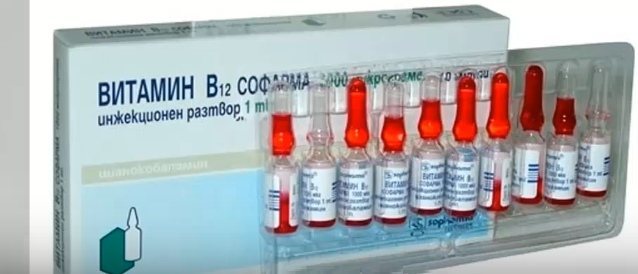

It happens that Petunia does not want to bloom for any buns. Whatever pampered her with, but she lacks something. Vitamin B12 (thiamine) works wonders. It stimulates the metabolism of the flower and helps to grow. Participates in chlorophyll photosynthesis, which gives green color to plants. The vitamin contains cobalt, which saturates plant cells with oxygen.
![]()
![]()
Preparing the solution:
1 ampoule of vitamin B12 for one glass of warm water. Spray an adult plant on a leaf. By the way, B12 is absorbed more efficiently from the bottom of the sheet. You can also feed petunia babies. Serve small sprouts with the vitamin to the root with the help of a pear. Feed every 7-10 days. The result will be amazing.
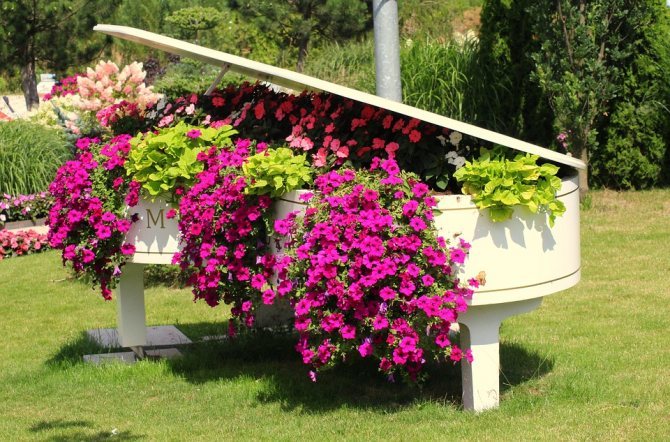

Petunia, although a capricious flower, is worth taking good care of, feeding and taking care of. In gratitude, she will give you luxurious fountains of flowers that will delight you and your loved ones.
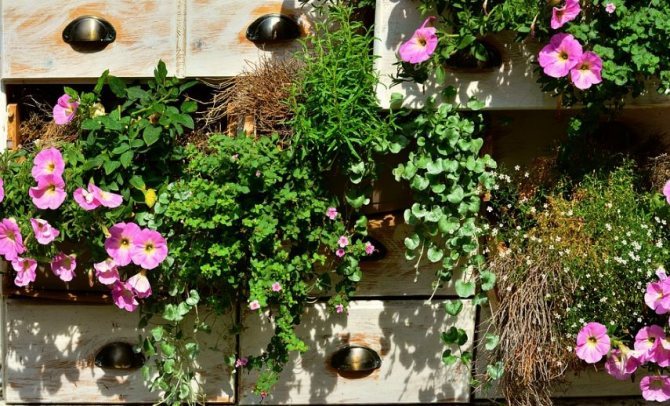

Start preparing for planting Petunias in the near future and a beautiful result will be already this summer!
Fertilizers for abundant flowering of petunias
In order for the petunia to bloom faster, in May, before planting plants in open ground, carry out a complex feeding. Replace the usual watering with a fertilizer solution.
- Nitroammofosk - 20 g per bucket of water.
- Zircon - 1 ampoule per bucket of water.
- Epin-Extra - 2 ampoules per bucket of water.
- Ammonium nitrate - 20 g per bucket of water (5 days after nitroammophoska).
- Diammofosk - 15 g per bucket of water (5 days after ammonium nitrate).
- Potassium monophosphate - a teaspoon in a bucket of water.
After planting in the ground, feed the petunia according to the scheme below.
- Potassium monophosphate - 5 g per bucket of water (2 weeks after planting in the ground).
- Fertika Lux - 20 g per bucket of water.
- Potassium nitrate - 15 g per bucket of water (alternate with Fertika Lux).
- Zircon - 1 ampoule per bucket of water (once a week).
From July, feed petunias with urea every two weeks and stop feeding when flowering is abundant. Use one of the following medications every 3-5 days, alternating between them:
- potassium monophosphate;
- potassium nitrate;
- Fertika Lux.
In August, feed the petunia in the same way as in July, but the frequency of feeding can be halved, that is, not with every watering, but after one.
Varieties of fertilizer mixtures
So that feeding petunias during flowering or at another stage of development gives a result, provide proper care for the plant. Fertilizer selection is an important procedure. Especially if the grower wants lush flower bushes.
Experienced farmers offer 3 types that are used for lush flowering:
- Prolonged action. Long-lasting granular fertilizer. Apply once - planting time in open soil. The dosage is indicated on the package. One application is enough for the flower to feel protected and cared for during the growing season. The only negative: the lack of splendor of the inflorescences. Outstanding representatives of the group: Superphosphate, Agricola, nitroammofoska and others.
- Powder or dry mix. Compulsory dilution in water is required. Breeding instructions are attached. 95-98% positive feedback was deserved by: Master, Plantafol, Kemira Lux.
- Concentrated solutions are the most popular because they do not require additional effort. I added the required dose to the water. Watered the plant. The best representatives of the group: Ideal, Uniflor. Agricola also enjoys success.
Interesting fact! Breeders of large greenhouses for breeding petunias and other decorative flowers try to avoid feeding with prolonged-release (long-term) fertilizers. If necessary, the introduction of drugs of this group, the dosage, according to their observations, should be reduced by 2-3 times.
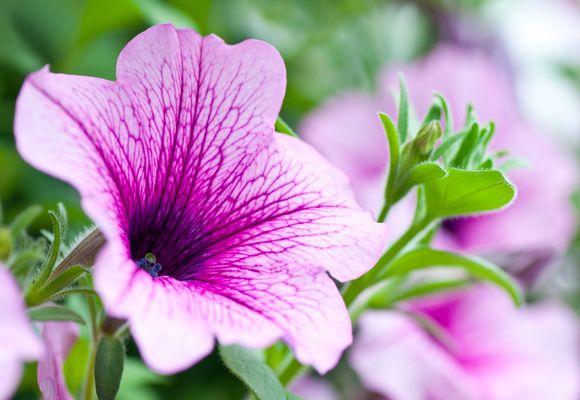

Foliar dressing
To stimulate flowering, gardeners are actively using foliar dressing - spraying plants. Immediately before planting petunias in open ground, treat the plants with urea - 5 g per bucket of water.
Three days after the first fertilization with potassium monophosphate in the open field, you can feed the petunia with UniflorMikro - 2 ml per bucket of water. If the petunia leaves turn yellow, treat the plants with Ferovit - 2 ampoules per liter of water, process once a week for a month.
How to feed seedlings
At the growth stage, the root system of the seedlings of petunias develops most actively. At this stage, complex mineral mixtures containing nitrogen, potassium and phosphorus are introduced. After picking (planting in separate containers), they wait until the plants take root and get used to it. Then you can feed with urea - nitrogen fertilizer. There should be enough nutrients before flowering.
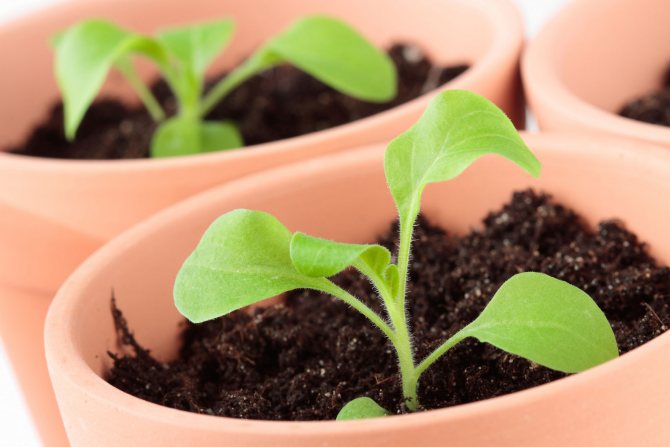

Closer to the beginning of tying buds, petunias need potassium and phosphorus feeding. Organic substances or potassium monophosphate are used.Nitrogen is no longer used as it can cause shoots and leaves to grow and affect flowering.
The brightness of the color is influenced by the presence of trace elements - zinc and cobalt. You can buy a complex fertilizer - Uniflor Micro, which has all the necessary trace elements, but many people just use zinc sulfate - it also helps.
Why do petunias need feeding and how to determine if seedlings need additional nutrition?
Any seedlings are fed with the sole purpose of obtaining high-quality plants, which will be impossible without certain nutrients (macro- and micronutrients), which are required for the normal growth and development of petunias.
However, it is rather difficult to give a specific feeding scheme for the timing or phases of seedling development.
The fact is that the conditions for growing petunia seedlings are different for everyone. Everything may differ, starting with the soil, sowing dates and ending with the temperature of the content and humidity. Accordingly, plants will develop in different ways.
We advise you to read these articles:
When to plant peppers for seedlings in 2020 in the Moscow region
Favorable days for landing in January 2020 according to the lunar calendar
Fertilizing tomato and pepper seedlings with ammonia recipe
Nevertheless, below you will receive general tips and recommendations, as well as an approximate scheme for feeding petunia seedlings for good growth and development.
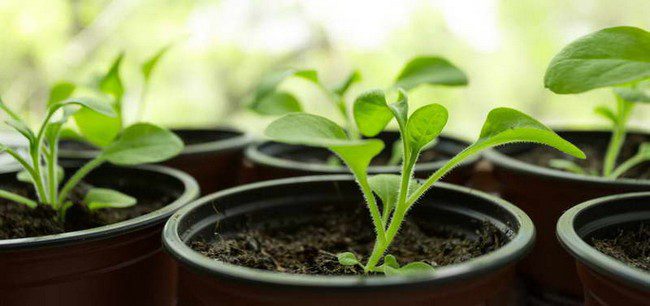

Fertilizers at the stage of sowing seeds
Seeds for seedlings can be planted in late winter or spring. The quality of future flowers depends on many factors, these are:
- Suitable soil composition.
- Quality seed material.
- Optimal watering regime.
- Fertilizers applied throughout the growing season.
The soil in which the seeds are planted is best purchased at a specialized store. It must contain a sufficient amount of peat and be loose. You can provide the soil with all the necessary substances for the full development of petunia with the help of fertilizers.
Important! Even if the seeds are planted in a nutritious and rich soil, the plants still need additional feeding.
